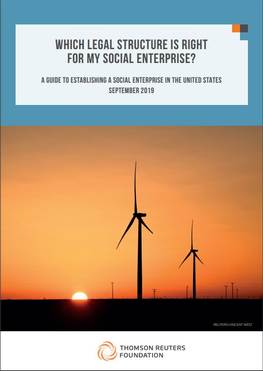The burgeoning field of social enterprise and the rise of impact investing have moved well beyond the dichotomy of for-profit and not-for-profit legal structures. For many social entrepreneurs, generating revenue (and sometimes profit) from their enterprises is a key driver, ensuring financial sustainability, generating returns for investors and avoiding the need to rely on charitable donations or grants. However, many such entrepreneurs also wish to pursue a mission outside of profit maximization, specifically focused on the promotion of non-monetary social, humanitarian and/or environmental goals. Legal structure can have a material impact on an entity’s pursuit of this dual mission of profit and social value.
The legal structure that an organization adopts sets the framework and governing rules under which it operates. Each organizational form has certain advantages and disadvantages in this respect, the materiality and applicability of which vary depending on the characteristics of an organization. For example, the legal structure a social enterprise assumes will have a significant impact on the sources of funding available to it. Certain social enterprises require a large upfront investment — for instance, to fund research.
The Thomson Reuters Foundation has partnered with Morrison & Foerster to produce this Guide which is intended to help social entrepreneurs navigate through the array of legal structures that are available for them in the United States. The Guide was initially published in 2016. This Guide is an updated version with new case studies and up to date legislation.








